
How to Teach English in Spain
Teaching English in a foreign country is a great idea for native-level speakers who would like to immerse themselves in another culture. However, when you get down to the nitty-gritty of exactly how to live and teach in the said country legally, your options can be limited.
As it can be very difficult to obtain a work visa in Spain, there are a number of programs in Spain that provide native-level English speakers the opportunity to teach English in the Spanish school system legally through a student visa.
Luckily for you, I’ve interviewed with more than half of the programs this past spring. I did a lot of research on the programs while I was interviewing because I’m such a good candidate, so here is a breakdown of what I gathered on each:
Meddeas
This is the program that I am currently enrolled in and would definitely recommend to anyone who is serious about teaching English in Spain. It allows me to live and teach in Spain legally on a Student Visa while I take bilingual education classes online from an accredited Spanish university. I personally chose this program after receiving offers from other programs because I did not want to have to pay any fee to enroll in the program (only a deposit, which you receive back once you complete the program) and was able to earn the most money through Meddeas. Medddeas also allows me to live and work in Barcelona, the only city I wanted to live in, as it is one of the few programs that offer placements here. You can see in the chart below the various programs they offer:
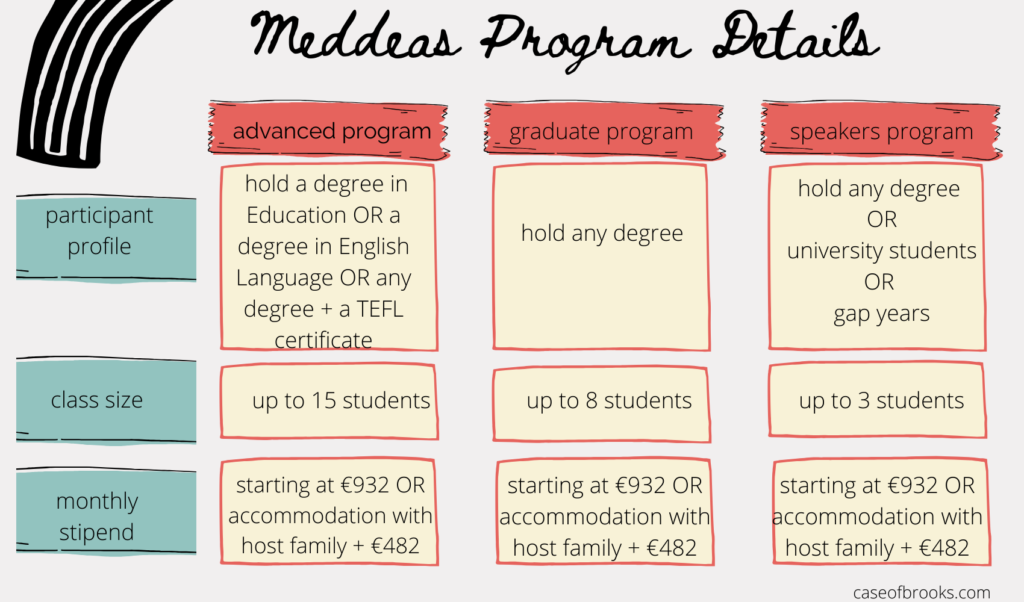
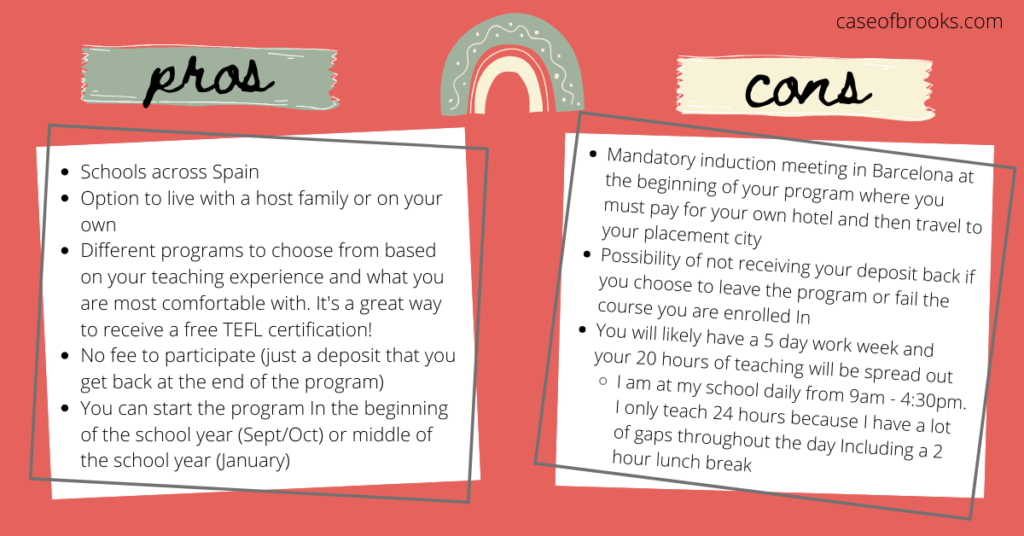
ConversaSpain
ConversaSpain was actually one of the first programs I interviewed with and received an offer from. They are kind of like a “sister program” to Meddeas. Unlike Meddeas, ConversaSpain works with schools in the Spanish public school system and the program only offers placements in the regions of Madrid and Murcia. It also requires a minimum payment of €1,275 to participate in the program. Payments to participate in the program run up to €2,100 based on the “package” you choose, see the table below from their website:
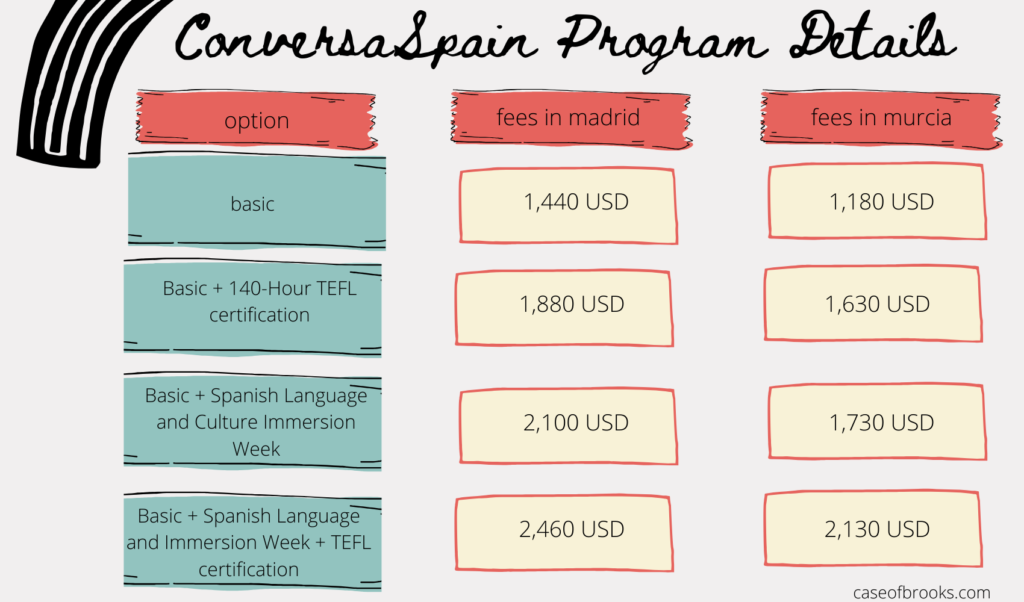
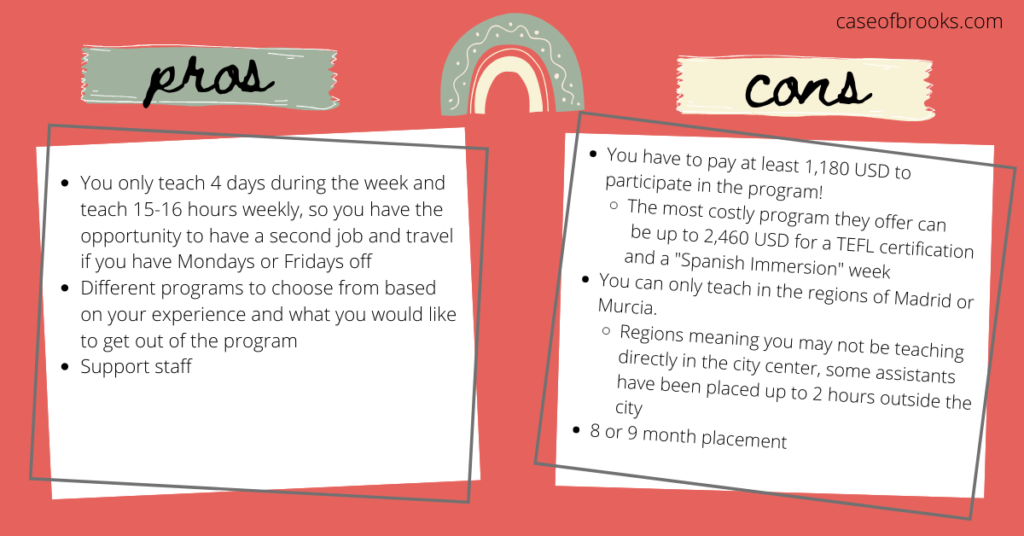
UP International Education
UP International Education is another program I interviewed with but I never received an offer from them, they basically ghosted me. I also had very specific location requirements, I only wanted to teach in Barcelona, and at the time they had filled all of the available positions there. However, I do know of other language assistants who have worked with this program and they seemed to enjoy it. Similar to the other programs, you will have a Student Visa and take online classes/training they call the “STEP Expert Course”. It seems that you are most likely required to work 20 hours a week and they have schools all across Spain.
I honestly have not been able to find a lot of information about this program and realize now that I did not ask enough questions to find out more information during the interview process. However, based on their job postings, it appears that participants typically teach 20 hours/week, which are completed within 09.00 to 17.00 Monday to Friday, teaching to infant, primary, or secondary students. The grant is up to 845 €/month and is variable upon the exact hours taught.
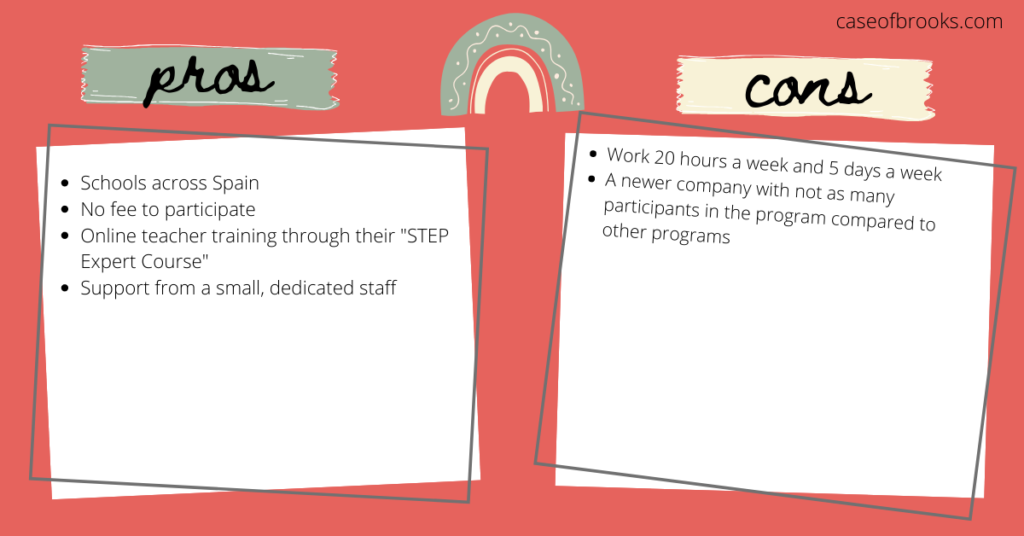
CIEE
CIEE is a reputable teach abroad company that offers a number of teach abroad programs not only in Spain but all across the world including China, Chile, South Korea, and Thailand. However in Spain, CIEE only offers teaching positions in Madrid or they have a volunteer program in the region of Castilla y León. Each program meets the different needs of the applicants based on their teaching experience and level of Spanish. With CIEE you will be teaching in public schools instead of private schools. Here is a breakdown of the programs offered:
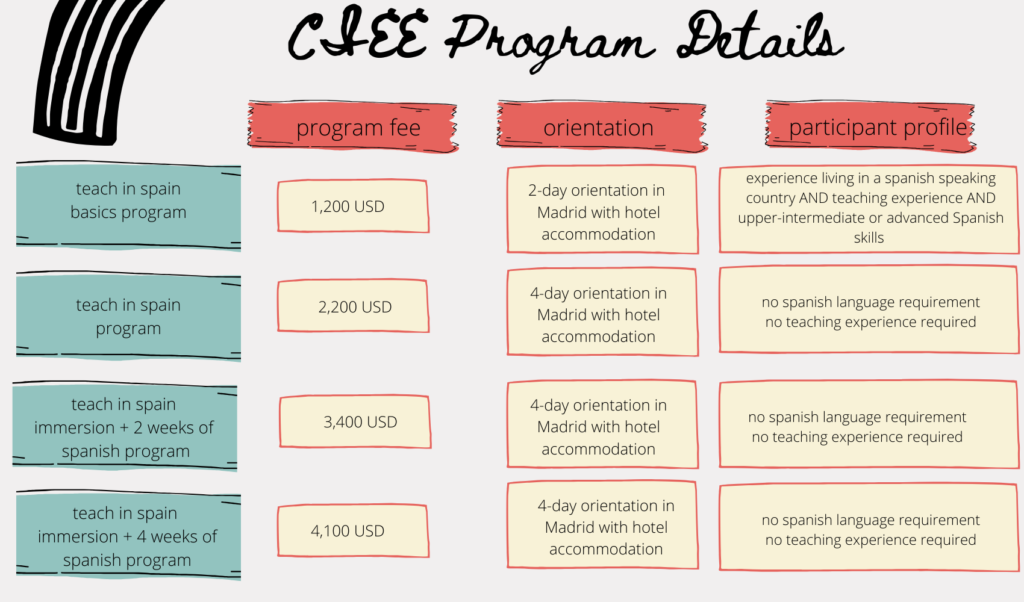
All programs include the following:
- 24/7 support from CIEE staff in Spain
- Pre-departure assistance including visa guidance
- Teach 16-hours per week
- 4-day work week with 3-day weekends
- €1,000 monthly stipend
- Placement within the Community of Madrid

BEDA
Unlike CIEE but similar to Meddeas, BEDA works with semi-private Catholic schools (concertados), meaning that they receive some funding from the government and some from tuition. BEDA, which stands for Bilingual English Development & Assessment, is a branch of Escuelas Catolicas de Madrid (ECM). The program mainly offers placements in Madrid, for context there are about 365 schools that BEDA works with, and of that number 300 are in Madrid. Other locations include: A Coruña, Albacete, Alicante, Asturias, Badajoz, Cadíz, Castellón, Cordoba, Ciudad Real, Guadalajara, Huesca, Las Palmas, Lugo, Murcia, Navarra, Pontevedra, Sevilla, Tenerife, Toledo, Valencia and Zaragoza.
During the program, you will take weekly teaching methodology classes at the Comillas University (if you are placed in Madrid, otherwise the course will be online). One nice thing about this course is that you can take Spanish classes if you have a low-level of Spanish as well. You can participate in the program for a maximum of four years, but can not work at the same school for more than two years.

Auxiliares de Conversación
The Auxiliar de Conversación program in Spain is another language assistant program that places North Americans in schools across Spain, however the main difference with this program is that it is run by the government through the Ministry of Education of Spain. I never considered applying for this program mainly because of this reason. After having lived in Spain for a few months I knew how unpredictable the Spanish government was and wanted to stay far away from working for them. I also read a number of blog posts and forums where participants from the program stated that it would often take months for them to receive their paychecks, which was a dealbreaker for me. However, it is still a popular program especially for participants who want to live and work in Madrid.

No matter what program you choose, becoming an English Language Assistant in Spain is a LIFE CHANGING experience and will surely rock your world. I am so grateful for this experience and it will be something that I will cherish forever.
This post was originally written in February 2020.
Stick a pin in it:





